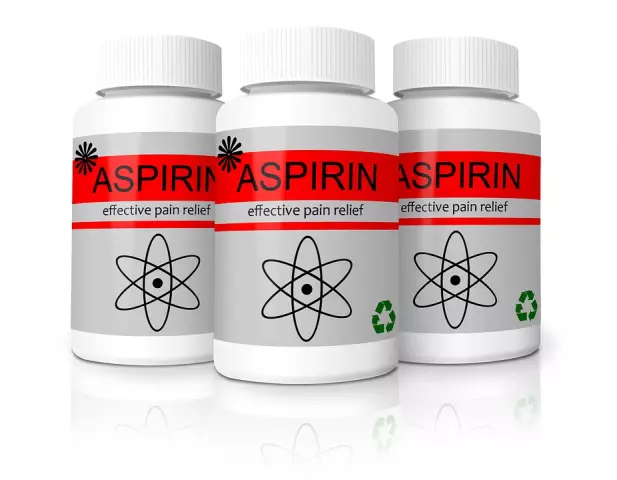- Author Rachel Wainwright [email protected].
- Public 2023-12-15 07:39.
- Last modified 2025-11-02 20:14.
Neck headache

Headache is a nonspecific symptom of various diseases, characterized by such physical properties as the intensity of pain, the duration of the attack and the localization of pain, manifested either as an isolated phenomenon or accompanied by other symptoms of the underlying disease: nausea, dizziness, hearing and visual impairment.
Cervical headache (vertebral cervicocranialgia) is a nonspecific pain symptom of a vertebrogenic nature, characterized by the localization of pain in the cervical and occipital regions, radiating to the fronto-orbital region. A headache of this nature is directly related to degenerative processes occurring in the cervical spine. In most cases, the cause of the development of cervical headache is osteochondrosis, much less often the development of this type of headache is affected by injuries of the cervical spine, aseptic inflammatory processes and other diseases.
Cervical headache is characterized by a variety of signs and variants of its course: headache in the cervical spine can be unilateral and generalized, pressing, bursting, sharp, burning, throbbing, dull, aching.
The manifestation of cervical headache is influenced by many factors: prolonged stay in a certain position, physical activity, hypothermia, sudden movements.
Cervical osteochondrosis: headache as the main symptom
Cervical osteochondrosis is a disease characterized by degenerative changes in the joints of the cervical vertebrae. The intervertebral discs (cartilage pads between the vertebrae) are made up of fibrous rings and nucleus pulposus. The main function of the intervertebral discs is to cushion and evenly distribute pressure on the vertebrae during movement. Over time, the nucleus pulposus becomes less elastic, which leads to a decrease in the spring properties of the spine. With the development of osteochondrosis, the fibrous ring breaks up and cracks, and the disc itself flattens. In addition to the destruction of the intervertebral discs, the growth of bone growths (osteophytes) at the edges of the vertebrae and the displacement of the vertebrae themselves are also observed.
When diagnosing cervical osteochondrosis, headache can be caused by the following factors:
- Vertebral artery syndrome;
- Compression of the vertebral nerves;
- Infringement of the posterior branch of the cervical spinal nerves;
- Hypertensive syndrome.
It should be noted that with cervical osteochondrosis, the headache will have different manifestations depending on the causes of the pain syndrome. Also, the treatment of headache in cervical osteochondrosis will depend primarily on the factors that provoke it.
Pathogenesis of headache in cervical osteochondrosis
The causes of headache in cervical osteochondrosis largely determine its nature, course and localization.
So, with vertebral artery syndrome, the cervical headache acquires a burning, pulsating character, with localization in the cervical and occipital region with its subsequent spread to the temporal and parietal lobes. Headache in cervical osteochondrosis in this case is caused by compression of the vertebral artery due to displacement of the vertebrae, disc herniation and other degenerative disorders of the cervical spine. In vertebral artery syndrome, the headache is accompanied by dizziness and visual impairment. Much less often, cervical headaches of this nature are accompanied by cerebral symptoms caused by circulatory failure.
Compression of the vertebral nerves running parallel to the vertebral artery can also cause headaches with the development of cervical osteochondrosis. This type of cervical headache is also called a cervical migraine. The specificity of headache caused by compression of the vertebral nerves is the unilateral nature of painful sensations arising from the affected nerve. Pain in this case is localized in the cervical and occipital regions on one side with possible irradiation to the temporal and parietal lobes on the same side. This headache can last up to 10 hours or more.
A cervical headache can occur due to entrapment of the occipital nerves passing through the bone canals formed by the cervical vertebrae. A cervical headache of this origin is also called occipital neuralgia. Infringement of nerves occurs due to the displacement of the vertebrae, compression by fragments of the disc, osteophytes. Cervical headache caused by compression of a branch of nerves can be unilateral or generalized. With this genesis, the cervical headache is characterized as burning, throbbing, localized in the occipital region. The headache can spread to the parietal, temporal, anterior lobe, reaching the orbits. As a rule, a cervical headache of this genesis is not accompanied by dizziness or other symptoms.

Compression of arteries and veins with degenerative changes in the cervical spine with osteochondrosis provokes the development of hypertensive syndrome, also accompanied by a neck headache of a bursting, pressing character. A cervical headache with such a violation is provoked by movements of the head and eyeballs. A headache of this genesis may be accompanied by general cerebral symptoms.
Neck headache: treatment, prevention
With a pronounced cervical headache, treatment will be aimed at both relieving painful sensations and eliminating the causes of the headache.
If the cervical headache is caused by a hypertensive syndrome, the main treatment should be aimed at reducing intracranial pressure, for which dehydrating diuretic drugs are used, as well as drugs that normalize venous outflow. The headache itself can be treated with analgesics.
With cervical headache caused by compression of the branches of the occipital and vertebral nerves, treatment involves the use of anti-inflammatory drugs, as well as the use of local agents (ointments, patches).
In the case of vertebral artery syndrome, for the relief of cervical headache, treatment involves the use of anti-inflammatory drugs, means for normalizing venous outflow, and improving blood circulation.
It should be noted that headache against the background of cervical osteochondrosis requires complex treatment. The use of antispasmodic drugs and analgesics for headaches in the cervical spine will only give a temporary effect. With a recurrent nature of the cervical headache, it is necessary to conduct a comprehensive examination to diagnose the causes of its development. Cervical osteochondrosis is a complex degenerative disorder of the spine, which entails damage to a number of its structures, directly causing headache. Treating lonely symptoms will only make the problem worse.
YouTube video related to the article:
The information is generalized and provided for informational purposes only. At the first sign of illness, see your doctor. Self-medication is hazardous to health!






